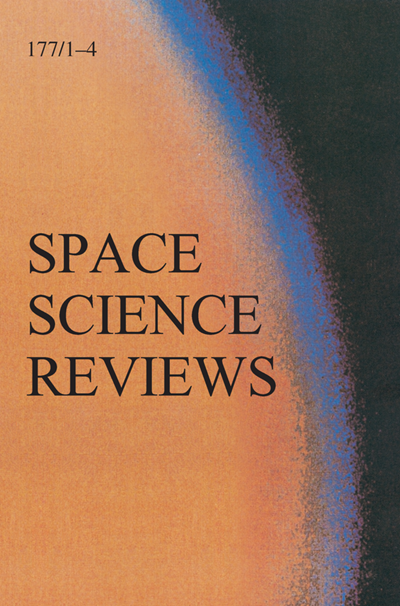Understanding Active Region Origins and Emergence on the Sun and Other Cool Stars
IF 7.4
2区 物理与天体物理
Q1 ASTRONOMY & ASTROPHYSICS
引用次数: 1
Abstract
Abstract The emergence of active regions on the Sun is an integral feature of the solar dynamo mechanism. However, details about the generation of active-region-scale magnetism and the journey of this magnetic flux from the interior to the photosphere are still in question. Shifting paradigms are now developing for the source depth of the Sun’s large-scale magnetism, the organization of this magnetism into fibril flux tubes, and the role of convection in shaping active-region observables. Here we review the landscape of flux emergence theories and simulations, highlight the role flux emergence plays in the global dynamo process, and make connections between flux emergence on the Sun and other cool stars. As longer-term and higher fidelity observations of both solar active regions and their associated flows are amassed, it is now possible to place new constraints on models of emerging flux. We discuss the outcomes of statistical studies which provide observational evidence that flux emergence may be a more passive process (at least in the upper convection zone); dominated to a greater extent by the influence of convection and to a lesser extent by buoyancy and the Coriolis force acting on rising magnetic flux tubes than previously thought. We also discuss how the relationship between stellar rotation, fractional convection zone depth, and magnetic activity on other stars can help us better understand the flux emergence processes. Looking forward, we identify open questions regarding magnetic flux emergence that we anticipate can be addressed in the next decade with further observations and simulations.了解活动区的起源和太阳和其他冷恒星的出现
太阳活动区域的出现是太阳发电机机制的一个不可分割的特征。然而,关于活跃的区域尺度磁场的产生和这种磁通量从内部到光球的旅程的细节仍然是一个问题。对于太阳大尺度磁场的源深度,这种磁场在纤维通量管中的组织,以及对流在形成活动区域可观测值中的作用,现在正在发展转变的范式。在此,我们回顾了通量涌现理论和模拟的发展概况,强调了通量涌现在全球发电机过程中所起的作用,并将太阳上的通量涌现与其他冷恒星联系起来。随着对太阳活动区及其相关流动的长期和高保真度观测的积累,现在有可能对新出现的通量模型施加新的限制。我们讨论了统计研究的结果,这些结果提供了观测证据,表明通量出现可能是一个更被动的过程(至少在上层对流区);在很大程度上受对流的影响,而在较小程度上受浮力和作用在上升的磁通管上的科里奥利力的影响,这比以前认为的要大。我们还讨论了恒星旋转、分数对流区深度和其他恒星的磁活动之间的关系如何帮助我们更好地理解通量的产生过程。展望未来,我们确定了关于磁通量出现的开放问题,我们预计可以在未来十年通过进一步的观察和模拟来解决这些问题。
本文章由计算机程序翻译,如有差异,请以英文原文为准。
求助全文
约1分钟内获得全文
求助全文
来源期刊

Space Science Reviews
地学天文-天文与天体物理
CiteScore
19.70
自引率
3.90%
发文量
60
审稿时长
4-8 weeks
期刊介绍:
Space Science Reviews (SSRv) stands as an international journal dedicated to scientific space research, offering a contemporary synthesis across various branches of space exploration. Emphasizing scientific outcomes and instruments, SSRv spans astrophysics, physics of planetary systems, solar physics, and the physics of magnetospheres & interplanetary matter.
Beyond Topical Collections and invited Review Articles, Space Science Reviews welcomes unsolicited Review Articles and Special Communications. The latter encompass papers related to a prior topical volume/collection, report-type papers, or timely contributions addressing a robust combination of space science and technology. These papers succinctly summarize both the science and technology aspects of instruments or missions in a single publication.
 求助内容:
求助内容: 应助结果提醒方式:
应助结果提醒方式:


